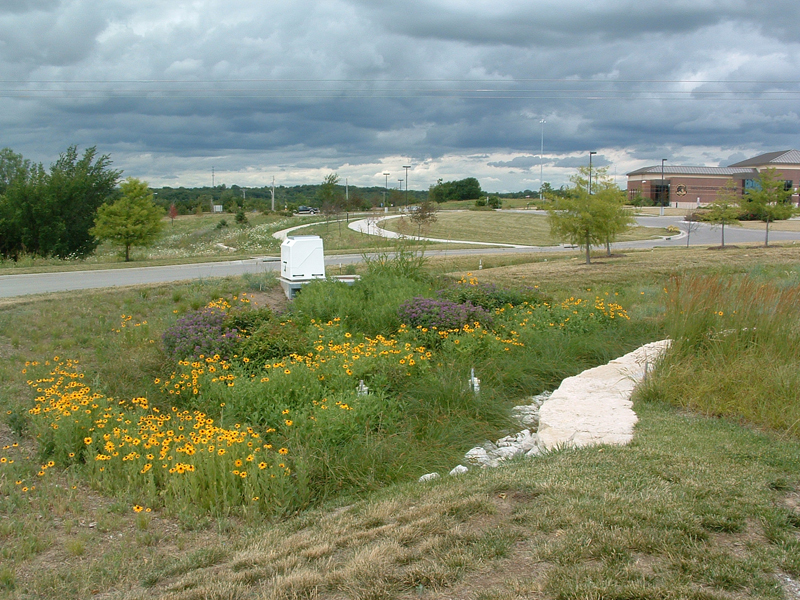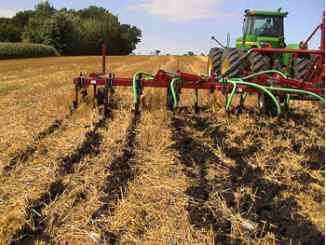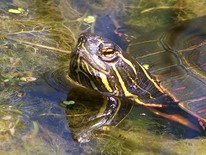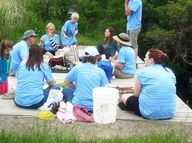
Urban Nonpoint Source & Storm Water (UNPS&SW) Construction Grant Applications for CONSTRUCTION PROJECTS beginning in 2021 are now available on the DNR’s UNPS&SW webpage. For Construction grants, the total state reimbursement amount cannot exceed $150,000 for construction and engineering, plus an additional $50,000 for land acquisition.
Cities, villages, towns, counties, regional planning commissions, tribal governments and special purpose lake, sewage, or sanitary districts may apply. The local government must have either jurisdiction over the project area or be required to control storm water discharge with an inter-governmental agreement between the municipality and the Department of Natural Resources.Cities. Applicants have until April 15, 2020 to submit applications for 2021 construction projects.
This grant program offers local governments competitive grants to control pollution that is carried by storm water runoff from diffuse urban sources. The grants reimburse costs of construction projects that control this type of pollution. Eligible projects include:
- Construction of structural urban best management practices (BMPs) including detention, wet, infiltration, or wetland basins, or infiltration trenches.
- Engineering design and construction services for BMPs installation.
- Land acquisition and easement purchase, including appraisal cost.
- Storm sewer rerouting and removal of structures.
- Streambank and shoreline stabilization.
Sector Team Updates

NRCS Success Story - Columbia County: Returning Habitat to the Land
Jason Givens, owner and operator of Lighthouse Kennels, partnered with NRCS to create bird habitat on his property. Through the Conservation Stewardship Program, he planted seven acres using a diverse mix of trees and shrubs. Local populations of pheasants are now on the rise.
In the rolling farmland of Cambria, Wisconsin, Jason Givens,
owner and operator of Lighthouse Kennels, has been raising
and training world class hunƟng dogs since 1996–one of the
dogs under his training won a naƟonal field trial championship
in 2003. Along with Springer and Cocker Spaniels, Jason also
raises and releases around 1,200 pheasants, 500 quail, and
500 chukar partridge per year on his 120‐acre property. Driv‐
en by the need to provide habitat for his released birds and a
natural environment to train the hunƟng dogs, Jason has been
restoring pasture and cropland to mixed species forest and
tallgrass prairie. Read more...
Madison, Wis. – USDA’s Natural Resources Conservation Service (NRCS) seeks public comments on its interim rule for the Regional Conservation Partnership Program (RCPP), which helps partners develop and implement unique conservation solutions that engage farmers, ranchers and forest landowners. The rule – now available on the Federal Register – takes effect on publication and includes changes to the program prescribed by the 2018 Farm Bill. Read more...
|

The Department of Natural Resources has submitted four Administrative Rule packages related to water quality standards to the State Legislature for their review. The Assembly and Senate committees that each rule was assigned to are shown at the bottom of the rule’s webpage under the “History” section. If public hearings are scheduled, they will be posted on the Legislature’s calendar at: https://docs.legis.wisconsin.gov/calendar/rules.
-
CR 19-014: Bacteria surface water quality criteria relating to updating Wisconsin’s water quality criteria for pathogens, specifically bacteria, to protect recreational uses; and updating related WPDES permit implementation procedures for the revised water quality standards to be consistent with EPA’s recreational water quality criteria. https://docs.legis.wisconsin.gov/code/chr/all/cr_19_014
-
CR 19-094: Waterbody assessments using biological metrics relating to processes for waterbody assessments and impaired waters listing, biological criteria for water quality standards, and biological confirmation of phosphorus impairments. https://docs.legis.wisconsin.gov/code/chr/all/cr_19_094
-
CR 19-093: Establishing a general process for developing site-specific criteria for phosphorus relating to the development of site-specific numeric phosphorus water quality criteria for surface waters. (Note: This rule is separate from the one for the Wisconsin River Basin below.) https://docs.legis.wisconsin.gov/code/chr/all/cr_19_093
-
CR 19-083: Wisconsin River Basin site-specific criteria for phosphorus relating to site-specific phosphorus water quality criteria for Petenwell Lake located in Wood, Juneau, and Adams counties, Castle Rock Lake located in Adams and Juneau counties, and Lake Wisconsin located in Columbia and Sauk counties. https://docs.legis.wisconsin.gov/code/chr/all/cr_19_083
|

Invasive species can be an economic and environmental burden as they spread along public rights of way. You can be part of the solution and save your municipality valuable resources down the road. Learn from invasive species experts and educators Matt Wallrath of Upper Sugar River Watershed Association and Anne Pearce of the WI First Detector Network as they share best management practices and emerging tools for planning and preventing future infestations. Topics covered will include things to consider when cleaning machines, identifying species of concern, how to map and report stands of invasives, and management timing suggestions to maximize control.
MADISON – Members of the Speaker’s Task Force on Water Quality gathered today for a press conference to debut their final report and recommendations, including 13 new legislative proposals. Over the past year, the task force held a total of 14 public hearings across Wisconsin, hearing from hundreds of citizens, experts, organizations, and stakeholders about the water quality issues facing their communities and the state as a whole. The bicameral task force proved to be an unprecedented, bipartisan effort to address water quality issues and ensure clean water for future generations. The report and recommendations released today summarize and expand upon the task force’s findings and can be found on their website: waterqualitywi.com.
|

City of Cudahy reduces impacts of road salt
Mary Jo Lange, PE, Director of Public Works for the City of Cudahy, explains, "Last [winter] season [2018-2019] when everyone ran out of salt, we only used 662 tons...Prior to our salt management program, we would have used 2000 tons and most likely ran out."
After having been told for over a decade the importance to reduce salt use, the City still struggled on how to do so. In 2013, it became the City's mission to figure out how to reduce salt usage. The first thing they tackled was calibrating their salting equipment correctly each season. They learned how to properly calibrate and test their equipment. Lange states that many people believe they know how to calibrate but they don’t. The same is true for new equipment. New equipment is not calibrated when it gets delivered to your agency. Cudahy did a test last spring upon delivery of a new truck with a Monroe spreader and Force Control equipment. It was registered that the equipment was placing 300 pounds of salt per lane mile, however upon testing, it actually was placing 575 pounds per lane mile. Lange said that in addition to calibration, the City has modified its pre-wetting system and uses brine application prior to most winter events. She suggests before investing in brine application, address your current equipment and calibrate. The biggest salt reduction and cost savings for Cudahy has been by simply calibrating its salting units annually and doing spot checks throughout the season.
Over the past five years Cudahy’s Public Works Department has reduced its salt usage by 56.25% with a cost reduction of roughly $241,400. Roughly $160,000 was generated from properly calibrated equipment. In the fall of 2018, the City of Cudahy took what they learned and shared it during a half-day presentation at the City’s facilities. The presentation can be viewed on the DNR Salt and storm water web page. The City of Cudahy has also offered to meet with other public works agencies to share their knowledge.
|

The map depicting WPDES permit holders that have formally selected adaptive management or water quality trading as their preferred phosphorus compliance option is updated and available here. Select a pin on the map to view more information about the permit holder, including the Notice of Intent (NOI) submitted to the DNR. Permittees identify themselves by submitting either a Notice of Intent to Trade or an Adaptive Management (AM) Request Form to DNR.
Date: 03/17/2020
Location: Stevens Point, WI
The Symposium provides information on current issues related to biosolids and septage management, enabling municipal officials, plant operators, contractors and consultants to respond proactively to new challenges. The Symposium has a tradition of providing a forum for discussion and information exchange by assembling speakers who are recognized experts in their respective fields.
DOWNLOAD THE SYMPOSIUM PROGRAM AND GENERAL INFORMATION BROCHURE HERE
|
|